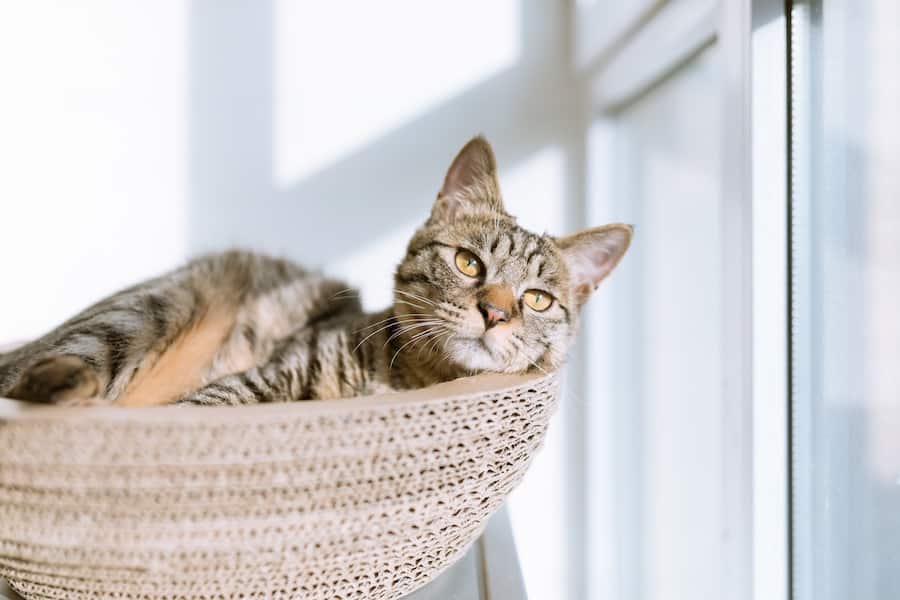Relocating to a new home, even within the same city, can be more difficult if you’re moving with cats. Even if your feline friend is usually docile, he may become extremely stressed if uprooted from his cozy home environment and his familiar territory. We’ve put together some of the most common moving pet mistakes, so you’ll know what to avoid when it comes time to relocate.
Mistake #1: Bringing out the cat carrier at the last minute
Cats are intelligent creatures. If they catch sight of the cat carrier the day before moving, they may think ‘vet!’ and you’ll waste precious time trying to find them if they hide. To ease your cat’s fears that he’s off to the vet for some vile treatment, bring out the cat carrier a few weeks before moving day so he becomes used to the sight and smell of the box.
Mistake #2: Letting your cat run loose while packing
When moving with cats ensure that they’re safe in a closed room when the packing process is taking place. Not knowing where your cat is can mean that they might accidentally end up in one of the packing boxes or run off. This is one of the common pet-related moving mistakes that you hear about. In one news story, a missing cat was found in a shipping container!
Mistake #3: Deciding not to book your cat into a cattery
If you’re undecided about whether or not to book your cat into a cattery or cat hotel, then it can be worth doing this for your peace of mind. Moving with pets can mean extra worry on your part and a disruption of schedule for them. Knowing they’re safe and being taken care of for a night or two is one less thing you have to consider.

Mistake #4: Not being prepared before you embark on a long journey
If your move involves relocating a cat and a long car journey you’ll need to think about your cat’s needs while traveling. For example, it’s best not to feed your cat just before you set off in case they develop travel sickness. However, do reward your cat with a few treats to help distract them if they’re scared or nervous. If your cat enjoys catnip or catnip blends, feel free to give catnip or other treats to ease the stress.
Do make frequent stops along the way so they (and you) get a chance to have a break. You may need to comfort them if they’re scared or nervous, and a few treats or their favorite toy can be a distraction. Always make sure your cat has enough to drink as well and invest in a pet travel bowl. Traveling can be thirsty work.
Finally, always keep your cat contained in their cat carrier when you’re driving or stopping in case they see a chance to escape.
Mistake #5: Not updating your cat’s ID and microchip
Speaking of which, one of the most important things to do when moving with pets is to ensure that their collar ID and microchip are updated with the new address details. Don’t wait until you reach your new address to do this, because if your cat does get spooked and run away during transit then it will make it harder for people to reunite you. Your cat may be adopted by a new family and you don’t want that.
Mistake #6: Assuming your pet will adjust quickly and easily
Part of the process of relocating a cat to a new home is to be patient while they come to grips with the new house. They’ll need time to adjust and explore, and mark out new territory. Some tips to settle them include:
- Keeping them indoors for at least two weeks, so they can get used to the new environment
- Checking that there are no tight spaces, cupboards or open chimneys they can hide in
- Keeping to familiar routines from the previous house with meals and play time etc.
- Not overfeeding or providing extra treats to compensate for the move
- Using a pheromone dispenser, like Feliway, to help calm them if they’re still feeling stressed.
Summary
Successfully moving with cats to a new home isn’t always easy, but it is definitely rewarding once you’re all unpacked and your furry friend is settling in well. If there’s one thing to remember if you want to avoid pet-related moving mistakes – it’s to plan ahead and think about how your cat is going to process the move and anticipate their needs. If you do this, they should be just fine.
Author’s Bio:
Angela Pearse is a blogger for Zumper who frequently combines travel with freelance writing. She’s passionate about Art Deco hotels, historical novels, Netflix, hiking and healthy living.
